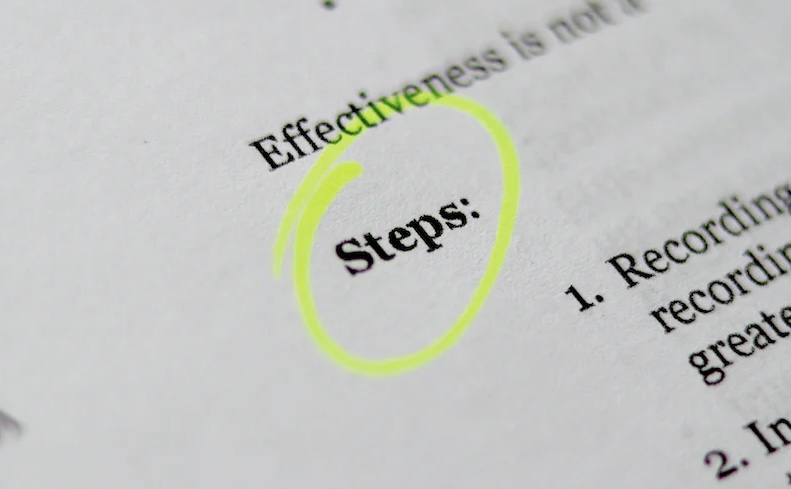
Taking steps to create a successful estate plan will pay off.
Many people enjoy knowing exactly what they need to do before taking the required steps to accomplish something.
In many cases, it is comforting to know what is expected.
Without clear directions, the fear of doing something wrong paralyzes them.
I know I feel most vulnerable when I do not know what I do not know.
According to a recent Maryland Reporter article titled “Estate Planning 101: 10 Tips for Success,” there are clear steps people can take to create a successful estate plan.

Following the outlined steps for estate planning can decrease anxiety around your future.
What are these?
List your assets.
To create a list, you should identify all of your property.
This includes real estate, investments, liquid assets, personal possessions (especially those of with monetary or sentimental value), and digital assets.
Once you have created a list, think carefully about what you would like to inherit each asset.
Be clear in your directions so there can be no confusion over your intentions.
Meet with an experienced estate planning attorney.
To pass your assets to others according to your own wishes, you must create a last will and testament or a funded revocable living trust.
Both are used to provided instructions for asset distribution after your death.
Failing to have a valid last will and testament or funded revocable living trust means you will die intestate and the courts will determine your heirs.
Additionally, you should choose an executor or a trustee to carry out your wishes.
Name a guardian.
Not all steps apply to every person.
You will only need to select a guardian in your estate plan if you have minor children.
Designate beneficiaries on your life insurance policy.
Having life insurance is prudent for those who earn the income for their family and for those who manage the household so the other spouse can work.
It protects the family financially should something happen to one or both parents.
When choosing a beneficiary, do not designate the guardian of your minor children.
Doing so will send the life insurance proceeds into the guardian's estate!
You may also choose to make the beneficiary a trust to provide for your children.
Discuss your options and wishes with your experienced estate planning attorney.
Make your wishes crystal clear.
By not neglecting the previous steps of working with an experienced estate planning attorney and detailing your list of assets, you will be better equipped to make your wishes clear.
Often legal documents prepared by individuals who are not estate planning attorneys are challenged in court by family.
“If-then” statements can make things more clear.
One example is “If my spouse predeceases me, then my house will be inherited by my children.”
Consider including a letter of intent or instruction.
Often last wills and revocable living trusts are not read prior to the funeral.
By leaving these letters, you can provide instructions specifically about funeral arrangements or who should receive specific items and the reasons for your choices.
This document is not legally binding, but it can be helpful in providing additional clarity.
Consider using a trust.
When taking estate planning steps, many people avoid the idea of a revocable living trust because they believe they are reserved only those who are wealthy.
Funded revocable living trusts are not only beneficial estate tax planning, but they can also allow for greater control and speed in asset distribution.
Assets held in a funded revocable living trust bypass probate.
Rather, the trustee of your choice distributes assets according to your instructions.
List your debts.
Listing debts is often an unpleasant task.
Taking time to do so will make life easier for your heirs and your executor.
Include liabilities like credit card debt, car payments, mortgage payments, and personal loans.
These must be paid by the estate prior to distributing assets to heirs.
Plan for digital assets.
The world is growing more digital.
Of the steps required to create a successful estate plan, this one is often quite tedious.
Digital assets can be confusing and hard to manage.
These include things like emails, social media accounts, pictures, and cryptocurrency.
You should put your usernames and passwords on these accounts as well so they can be accessed if you die or become incapacitated.
You should provide instructions on whether the account should be deleted or available for certain individuals to access.
Often digital platforms have their own rules regarding digital asset planning.
Identifying how estate taxes will be paid.
Even by following all these steps, it is often impossible to avoid all estate taxes, even with the federal estate tax exemption at $12.06 million per individual in 2022.
How?
Although all taxpayers are subject to federal estate tax rules, some live in places where the state also has its own estate and inheritance taxes.
If you will be subject to taxes, discuss with your estate planning attorney how these can be avoided or minimized/paid strategically.
Plan for Long Term Care.
The steps for estate planning include both planning for death and incapacity.
About 70 percent of Americans will require long-term care before they die, according to the Department of Health and Human Services.
The payment options for long-term care include government programs, long-term care insurance, and self pay.
Have a plan.
And "hope" that you will not be among the 70 percent is not a plan.
By following these steps, you can rest knowing you have thoroughly prepared a plan to meet the needs of you and your loved ones.
Resource: Maryland Reporter (Sep. 27, 2022) “Estate Planning 101: 10 Tips for Success”
REMEMBER: “The choice of a lawyer is an important decision and should not be based solely upon advertisements.”
This statement is required by rule of the Supreme Court of Missouri.
